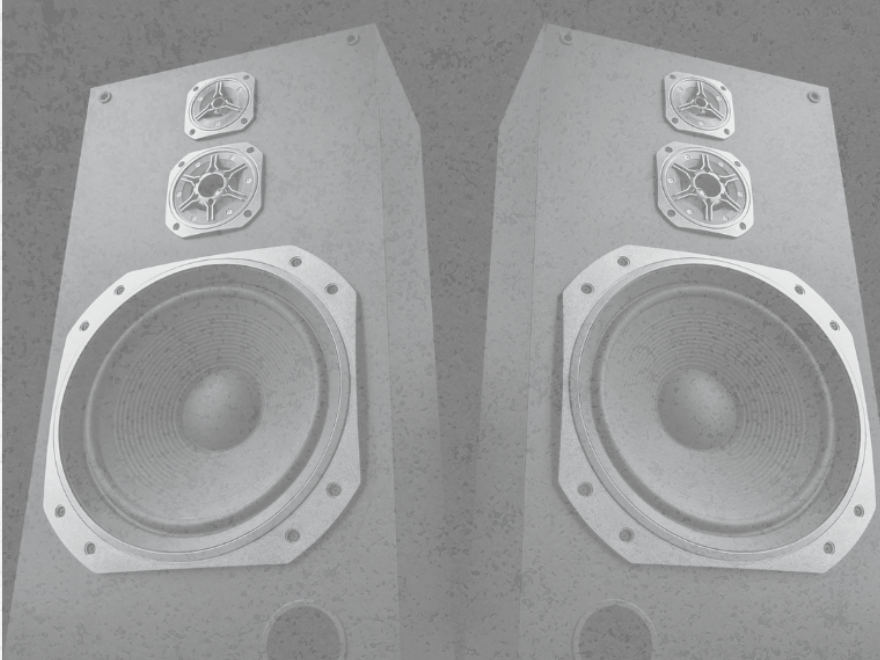Floorstanding speakers, also called tower speakers, are tall and upright speakers that produce a wide variety of sound frequencies, creating a superb audio experience in varying situations. They are an essential component of home theatre and stereo systems, offering a versatile and immersive sound experience.
How Do Floorstanding Speakers Work?
Floorstanding speakers, or tower speakers, feature a cabinet design that houses multiple speaker drivers. The footprint of floorstanding speakers varies depending on the model, but they generally occupy more floor space than bookshelf speakers. However, there are distinct advantages to floorstanders, including improved bass response, along with the ability to deliver powerful room-filling sound.
Cabinet Size and Design
Tower speakers come in various sizes and designs, with the cabinet size directly impacting the speaker's performance. Larger cabinets generally offer better bass response and can house multiple drivers for a more detailed sound reproduction. Smaller cabinets, on the other hand, may have a sleeker design and take up less space but might compromise on bass performance.
Footprint and Placement
Floorstanding speakers typically have a larger footprint than bookshelf speakers, requiring more floor space for proper placement. However, their tall and slim design allows them to blend seamlessly into most living spaces. When positioning tower speakers, it's crucial to take into account the room's acoustics. For optimal sound quality, maintain a balance between the speakers and the listening position.
Advantages over Bookshelf Speakers
Tower speakers offer several benefits over bookshelf speakers:
- Broader frequency range
- Enhanced bass response
- Better dynamics and soundstage
- Room-filling sound
Understanding Floorstanding Speaker Drivers and Frequencies
Floorstanding speakers typically house multiple speaker drivers, each designed to reproduce a specific frequency range. These drivers include tweeters for high frequencies, midrange drivers for mid frequencies, and woofers for low frequencies.
Tweeters, Midrange Drivers, and Woofers
- Tweeters: Responsible for high-frequency sounds (e.g., cymbals, flutes). Common types include dome and ribbon tweeters.
- Midrange drivers: Handle mid-frequency sounds (e.g., vocals, guitars). They often use cone or dome-shaped diaphragms.
- Woofers: Produce low-frequency sounds (e.g., bass drums, bass guitars). They typically use large cones to move more air, resulting in deeper bass.
Frequency Response Range of Floorstanding Speakers
The frequency response range represents the range of frequencies a speaker can reproduce accurately. Floorstanding speakers generally cover a wider frequency range than bookshelf speakers, allowing them to deliver a more comprehensive sound experience
Here's a table with the frequency response ranges for a small selection of floorstanding speaker models. Please note that the data provided is based on the manufacturer's specifications:
|
Brand & Model |
Frequency Response Range |
|
JBL Stage A170 |
44 Hz - 40 kHz |
|
48 Hz - 22 kHz |
|
|
Fyne Audio F302i |
36 Hz - 28 kHz |
|
Revel Concerta2 F36 |
39 Hz - 21 kHz |
|
Polk Reserve Series R600 |
34 Hz - 38 kHz |
Always refer to the manufacturer's specifications for accurate information on a specific speaker model.
Crossover Networks
Crossover networks are responsible for distributing the audio signal's frequencies to the appropriate speaker drivers. By ensuring each driver receives only the frequencies it can accurately reproduce, the crossover network helps create a seamless and cohesive sound experience.
Bass Response in Floorstanding Speakers
Bass response is a critical aspect of floorstanding speakers, as it contributes to the overall sound quality and listening experience.
Importance of Low-Frequency Reproduction
Accurate low-frequency reproduction is essential for creating an immersive audio experience. It helps convey the depth and power of music or movie soundtracks, adding to the emotional impact of the content.
Cabinet Size Impact on Bass Performance
The cabinet size of floorstanding speakers directly affects their bass performance. Larger cabinets can house more substantial woofers and offer better bass response, while smaller cabinets may sacrifice bass performance for aesthetics and space-saving considerations.
Ported vs. Sealed Designs
Floorstanding speakers can come in either ported or sealed designs, each with its own impact on bass performance:
- Ported: Ported designs feature a hole or tube that allows air to escape from the cabinet. This design can enhance bass response and improve overall efficiency.
- Sealed: Sealed designs have no openings, resulting in a tighter and more controlled bass. However, they may require more amplifier power to achieve similar volume levels as ported designs.
Audio Efficiency and Sound Pressure Levels
Audio efficiency and sound pressure levels (SPL) are crucial factors to consider when selecting floorstanding speakers for your home audio system.
Measuring Speaker Efficiency
Speaker efficiency, measured in decibels (dB), represents the speaker's ability to convert amplifier power into sound. A higher efficiency rating means the speaker is able to proportionally produce more sound with less power. This makes it easier to achieve a room-filling sound.
Relationship with Amplifier Power
The relationship between speaker efficiency and amplifier power is critical in achieving the desired SPL. Less efficient speakers could require a more powerful amplifier to produce the same volume level as a more efficient speaker.
Achieving Room-Filling Sound
To create a room-filling sound, it's essential to match your floorstanding speakers' efficiency and amplifier power. This combination ensures that the speakers can produce enough volume to fill the space while maintaining audio quality.
Surround Sound and Home Theatre Applications
Floorstanding speakers are an excellent choice for home theatre and surround sound setups, as they can create a cohesive and immersive soundstage effect.
Creating a Cohesive Soundstage Effect
The soundstage effect is the illusion of a three-dimensional audio environment created by the speakers. Floorstanding speakers, with their wide frequency range and impressive dynamics, can contribute significantly to this effect, making the audio experience more immersive and engaging.
Floorstanding Speakers in a Surround Sound Setup
In a surround sound setup, floorstanding speakers are commonly used as front left and right channels, while smaller speakers or satellite speakers handle the surround channels. This configuration helps create a balanced soundstage and ensures the main audio elements are clearly reproduced.
Integrating with Other Speaker Types
Integrating floorstanding speakers with other speaker types, such as centre channel and subwoofer, is essential for a cohesive surround sound experience. Proper calibration and matching of speaker characteristics, such as timbre and sensitivity, contribute to a seamless and harmonious sound.
Floorstanders For Stereo Systems
Floorstanding speakers can also enhance stereo systems, offering excellent music playback and creating a captivating soundstage.
Floorstanding Speakers for Music Playback
With their wide frequency range and dynamic capabilities, floorstanding speakers can accurately reproduce various music genres from classical and jazz to rock and electronic music, to provide an engaging and detailed listening experience.
Stereo Imaging and Soundstage
In a stereo setup, floorstanding speakers can create a realistic soundstage and stereo imaging, giving the listener the impression that the music is being performed live in the room.
Dynamics and Audio Fidelity
Floorstanding speakers are capable of reproducing a wide range of dynamics, from subtle nuances to powerful crescendos, maintaining audio fidelity and accurately conveying the artist's intent.
Factors to Consider When Choosing Floorstanding Speakers
There are several things that need consideration when choosing the best floorstanding speakers:
- Room size and acoustics: Consider your room's dimensions and shape, as well as its acoustic properties, to select the appropriate speaker size and design.
- Budget and speaker quality: Balance your budget with the desired sound quality, keeping in mind that higher-priced speakers may offer better performance and build quality.
- Matching with existing audio components: Ensure that the chosen speakers can integrate seamlessly with your existing audio equipment, such as amplifiers, receivers, and other speakers.
Conclusion
Floorstanding speakers play a vital role in elevating the audio experience in home theaters and stereo systems. They offer an immersive and room-filling sound, with impressive dynamics and a wide frequency range. By carefully selecting and setting up your floorstanding speakers, you can enjoy an unparalleled audio-visual experience that brings your favorite content to life.



Share:
The Benefits of Bi-Wiring and Bi-Amping Your Bookshelf Speakers: A Comprehensive Guide